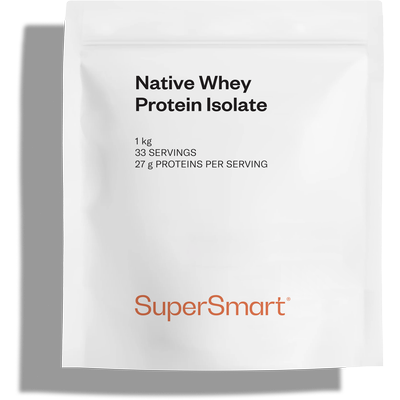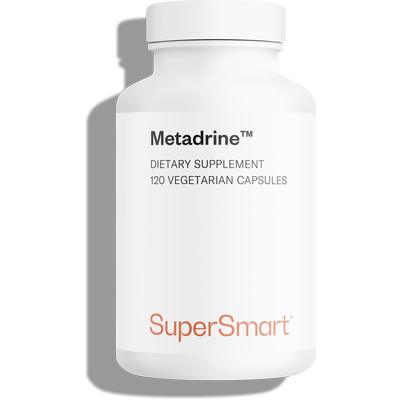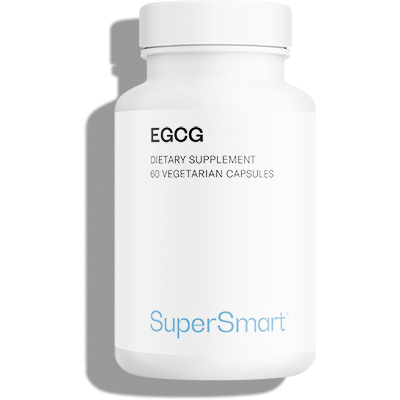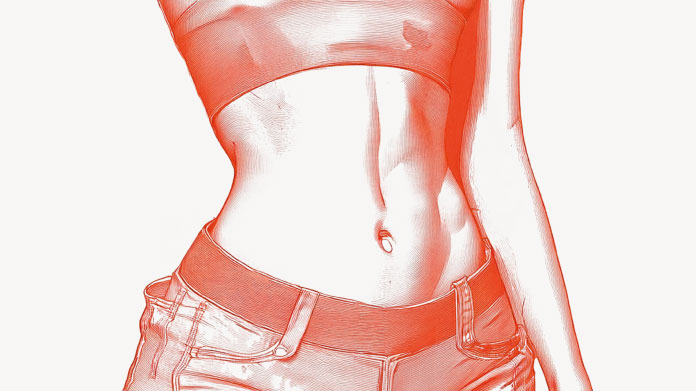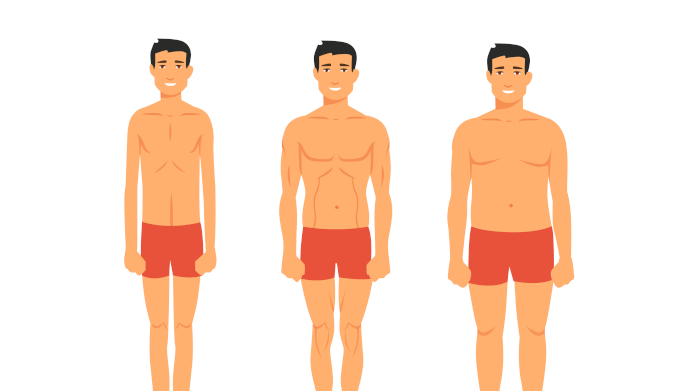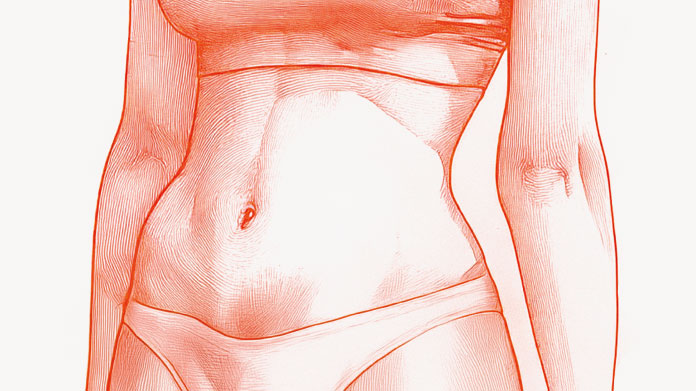How to increase your metabolism?
Diets are no longer popular. To lose weight, it is now recommended to increase your "basal metabolic rate". But what does this actually mean and how can it be achieved?

What is the basal metabolic rate?
Definition of metabolism
Metabolism refers to all the biological processes through which the body converts food into energy, used to meet its vital needs and for physical activity.
Metabolism comprises many essential chemical reactions. These include digestion, the production of new materials (anabolism), the breakdown of substances (catabolism), the transport of nutrients, heat production (thermogenesis), hormone regulation, etc.
When is metabolism ‘fast’ or ‘slow’?
Depending on the rate at which the body consumes energy, a given metabolism is said to be either slow or fast.
This 'speed' depends above all on the basal metabolic rate (or 'resting metabolic rate').
Basal metabolic rate is the amount of energy required for a person's basic functioning when at rest and fasting.
A person with a slow metabolism requires little energy to carry out these vital functions. As a result, they tend to gain weight, as their body stores excess energy from food.
In contrast, a person with a fast metabolism struggles to put on weight because they expend much more energy on the same basic functions.
What does the basal metabolic rate depend on?
This 'incompressible' energy expenditure represents around 70% of energy expenditure over the course of a day — on average 1700 kcal per day — though this can vary greatly from one individual to another for several reasons, including (1):
- genetics – some people are naturally predisposed to a higher or lower metabolic rate;
- age – the older you get, the lower your basal metabolic rate;
- gender – on average, men have a higher basal metabolic rate than women;
- muscle and fat distribution – the greater the fat reserves, the lower the basal metabolic rate;
- illness – certain illnesses can raise the metabolic rate.
Why increase your basal metabolic rate?
Increasing your basal metabolic rate is one of the possible ways of losing weight.
If a person's energy intake is consistently higher than their body's energy consumption (in other words, they eat more than they need), the excess energy is stored as fat, resulting in weight gain. This weight gain can continue until a balance between food intake and energy expenditure is achieved.
The most obvious solution is to reduce food intake to stop gaining weight, or even lose weight if food intake is no longer sufficient to cover expenditure. The body is then forced to draw on its energy reserves — fat and muscle.
Unfortunately, this miracle solution known as 'dieting' doesn't work very well: for a host of well-researched reasons, overweight people are unable to control their intake over the long term.
A second (complementary) solution is therefore emerging: increasing the body's expenditure, through physical activity, of course, but also by increasing the basal metabolic rate.
In a marginal way, some groups aim to boost their metabolism:
- sportsmen and women seeking enhanced performance (especially those who want to minimise the risk of fat storage):
- people with metabolic imbalances (e.g. blood sugar disorders, a higher risk profile for type 2 diabetes, etc.);
- people over 40 aiming to counteract the natural age-related slowing of their metabolism, such as by reducing the risk of sarcopenia (loss of muscle strength).
How do you increase your basal metabolic rate?
The most effective method for increasing your basal metabolic rate over the long term is to build muscle mass.
The main reason for this is that maintaining this mass is much more energy-intensive than maintaining fat reserves (three times more).
Put another way, a muscular woman weighing 70 kilos with minimal fat reserves will be able to eat more without gaining weight than if she weighed the same but had less muscle mass.
Here are 5 tips for increasing muscle mass (sometimes referred to as ‘lean mass’):
- Engage in regular physical activity involving as many muscles and joints as possible (weight training or full-body sports). Focus on multi-joint exercises (push-ups, squats, pull-ups, burpees, deadlifts, etc.) and gradually increase the intensity or difficulty.
- Consult a health professional if you are starting from scratch.
- Introduce a slight calorie surplus, of around 5 to 10% for a few months (as long as you continue to practise your activity), paying particular attention to a healthy, balanced diet and optimum hydration (drink at least 1.5 litres of water a day). Consult a nutritionist if necessary.
- Make sure you get enough quality sleep, as it is crucial for the production of new muscle fibres. Take regular rest and naps.
- Increase your protein intake, through your diet (e.g. eggs, foods rich in plant proteins, lean meat) and with the help of protein supplements such as whey, which are very practical for everyday use. For optimum effectiveness, choose a native whey isolate such as Native Whey Protein Isolate.
What about other ways of naturally boosting your metabolism and energy expenditure?
Daily energy expenditure
Are you looking for other ways to boost your metabolism and energy expenditure?
To begin with, remember that your daily energy expenditure is the sum of:
- your basal metabolic rate (at rest);
- your physical activity (movement, sport);
- your thermoregulation (maintaining body temperature); and
- your dietary thermogenesis (digestion and storage of nutrients).
Let's take a look at 3 different known methods.
Regular physical activity (cardio or endurance type)
Physical activity undoubtedly burns up energy: 375 kcal for a 15-minute high-intensity run (5 km), 3,200 kcal for a 2-hour 10-minute marathon and 10,000 kcal for an 8-hour triathlon.
If it's regular and accompanied by good eating habits, it's a fairly effective way of managing your weight.
Beware, however: at first, the feeling of exertion is very high, which often leads to compensating with food (sometimes excessively), and therefore ultimately a very limited impact on weight.
Exposure to cold (thermoregulation)
When exposed to cold, the body burns energy to regulate its internal temperature: nearly 370 kcal are expended during a 3-hour exposure.
However, this doesn't work as a long-term strategy: it's ineffective for weight management (you'd have to maintain low temperatures long after losing weight to keep it off) and it weakens the body's defences.
Thermogenesis
The digestion, storage and utilisation of the various nutrients also require energy (this is known as dietary thermogenesis or the thermal effect of food).
This expenditure accounts for around 10-15% of a sedentary person's total expenditure, but it is difficult to change in practical terms.
You can eat more small meals instead of three large ones, allowing the digestive system to absorb more energy, but the gain is fairly marginal.
You can also use so-called ‘fat-burning’ plants, which work by increasing thermogenesis.
There are 2 different types:
- those containing caffeine (2), such as coffee, green tea leaves, mate leaves and guarana seeds. It's not recommended to exceed 300 mg of caffeine per day (2 to 6 cups of coffee, depending on preparation method and cup size). You're probably better off using dietary supplements based on caffeinated fat-burning plants, such as a green tea EGCG supplement (like EGCG) to help you control your intake;
- those containing capsaicin (3), such as red peppers. This substance stimulates receptors that trigger thermal responses, in particular heat loss mechanisms such as skin vasodilation. Again, it's best to opt for specialist supplements (such as Metadrine™).
Thermogenesis is a very interesting option for increasing your metabolism, particularly after the age of 50 or 60 (though not exclusively), in addition to gentle physical activity.
In short, with a few daily adjustments, such as a better-balanced diet, regular physical activity and the inclusion of certain food supplements, it is possible to support your metabolism naturally and sustainably, while taking care of your health.
SUPERSMART ADVICE
References
- Quintard, H., Fontaine, E., Ichai, C., & Leverve, X. (2011). Métabolisme énergétique: de l’organisme á la cellule. Désordres Métaboliques et Réanimation, 439–452. doi:10.1007/978-2-287-99027-4_23
- Westerterp-Plantenga M, Diepvens K, Joosen AMCP, Bérubé-Parent S, Tremblay A. Metabolic effects of spices, teas, and caffeine. Physiol Behav. 30 août 2006;89(1):85-91.
- Szolcsányi J.Effect of capsaicin on thermoregulation: an update with new aspects. Temperature (Austin). 2015 Jun 2;2(2):277-96. doi: 10.1080/23328940.2015.1048928. PMID: 27227029; PMCID: PMC4843897.
Keywords
2 Days
Great product and it arrives quickly.
Great product and it arrives quickly.
SOMMARIVA Gianni
3 Days
Excellent products and fast service.
Excellent products and fast service. What do we need more?
Margarida
7 Days
The variety of products is amazing
The variety of products is amazing, the offers are good and the sending is very fast. I just miss having a bit more of guidance about combinations, possible interactions, etc.
Maria Angeles Verdu
8 Days
It was quick
It was quick.
Timo Antero
11 Days
Who is a good boy? You, you are! Yes, yes
:) :(:) :(:) :(:) :(
JORGE Catalan Gasco
13 Days
Excellent online site
Excellent online site, efficient and quick delivery. A great experience.
Chris
16 Days
I’m really happy with your products, but…
I’m really happy with your products. Indeed, I’ve been a customer of SuperSmart for a long time. However, I believe that lately you’ve made a significant mistake in choosing Poste Italiane for your deliveries. Poste Italiane is now over loaded and assigns the deliveries to small local companies that have grown like mushrooms because of this business. However, the service they provide is very poor. They let you know about the delivery date just the evening before, with no time to organize yourself, many times you receive a message saying that they tried to deliver but you were not home and in reality they haven’t come at all and, when they do come, you open the door of the building ( I live on the 3rd floor) and when you get downstairs they have already left, leaving the pack inside but right behind the glass door instead of at least putting it on top or under the letterbox. This is not just a one time event but it’s their way of proceeding. It would be worth hiring a professional currier. Thanks
Olga Gladys Del Signore
16 Days
Good products
Good products, fast service
Mrs I Heinrich
23 Days
Quality products and fast shipping.
Quality products and fast shipping.
JF
24 Days
Everything is great. Keep up
Your product and service is great that's why i ordered again.
KOSMATOS Stamatios
28 Days
everything as expected
the products work and the processes to support them also
Ruggero Benedetto
30 Days
Excellent products always up to date…
Excellent products always up to date with the latest developments.
Olga Gladys Del Signore
34 Days
Great service
Great service, exceptional delivery time.
Chris
36 Days
Excellent quality of Super Smart
I’ve used Super Smart products for a long time and since the very beginning I have been absolutely keen about their punctuality in delivering but, most of all, I appreciate the quality of their products and the constant updates following the results of proven research.
Olga Gladys Del Signore
38 Days
Slow post
You have a very good range of quality products, and service is usually good. However delivery was slow due to using the national postage company. Correos. Regards David
David Walsh

